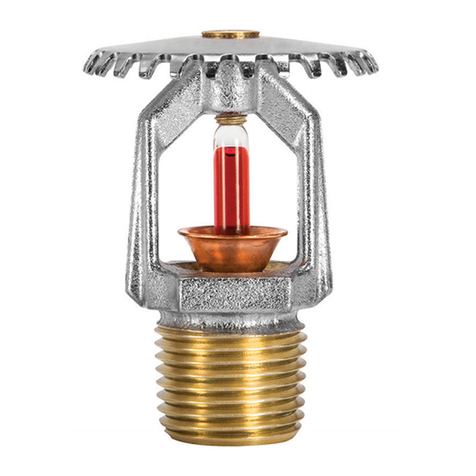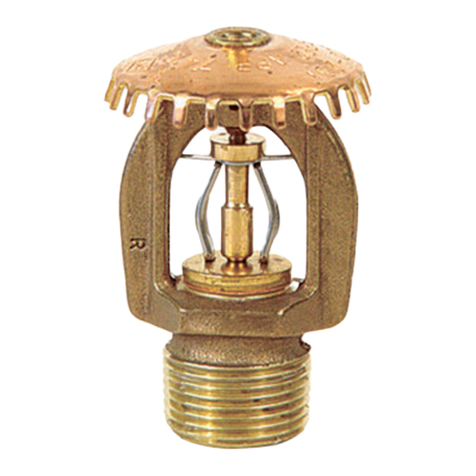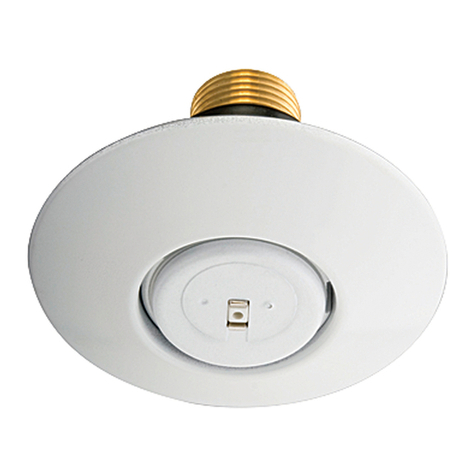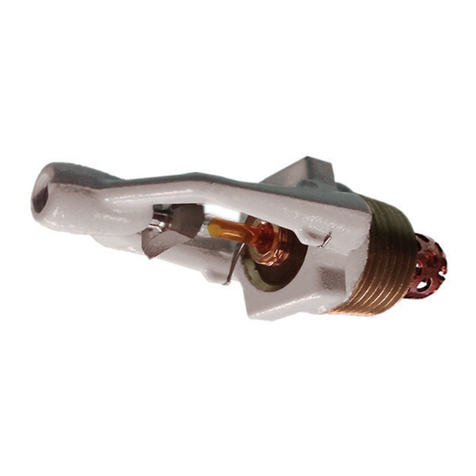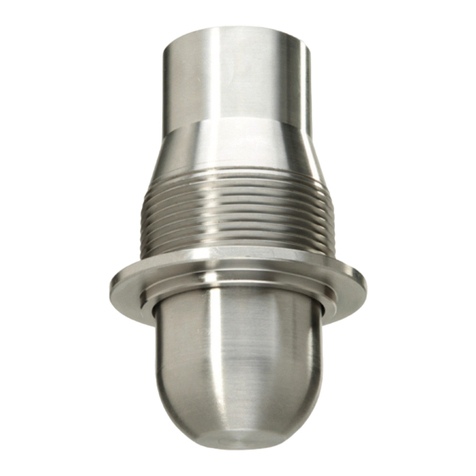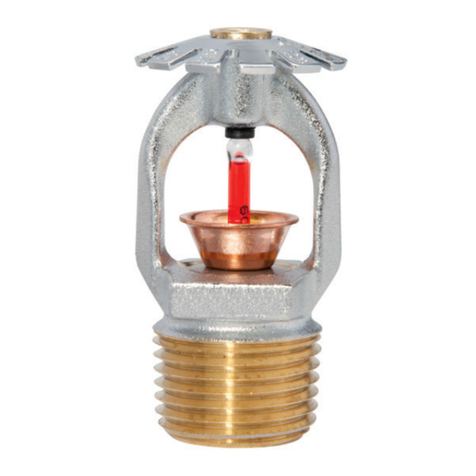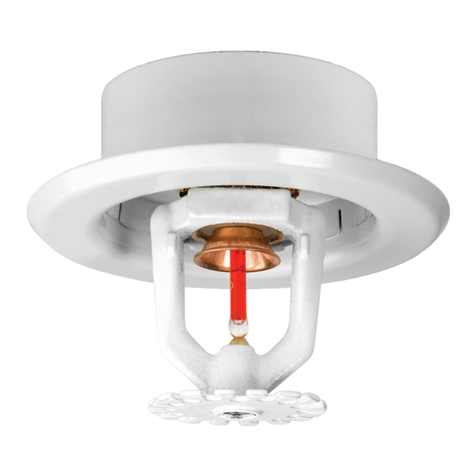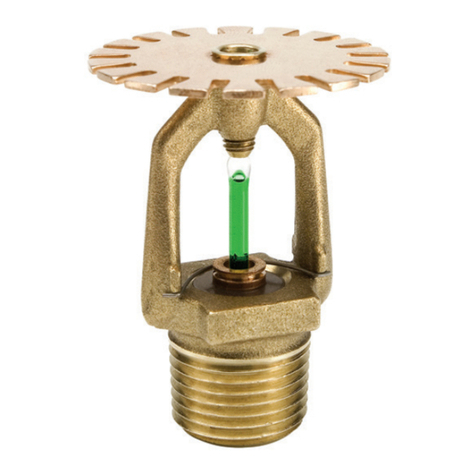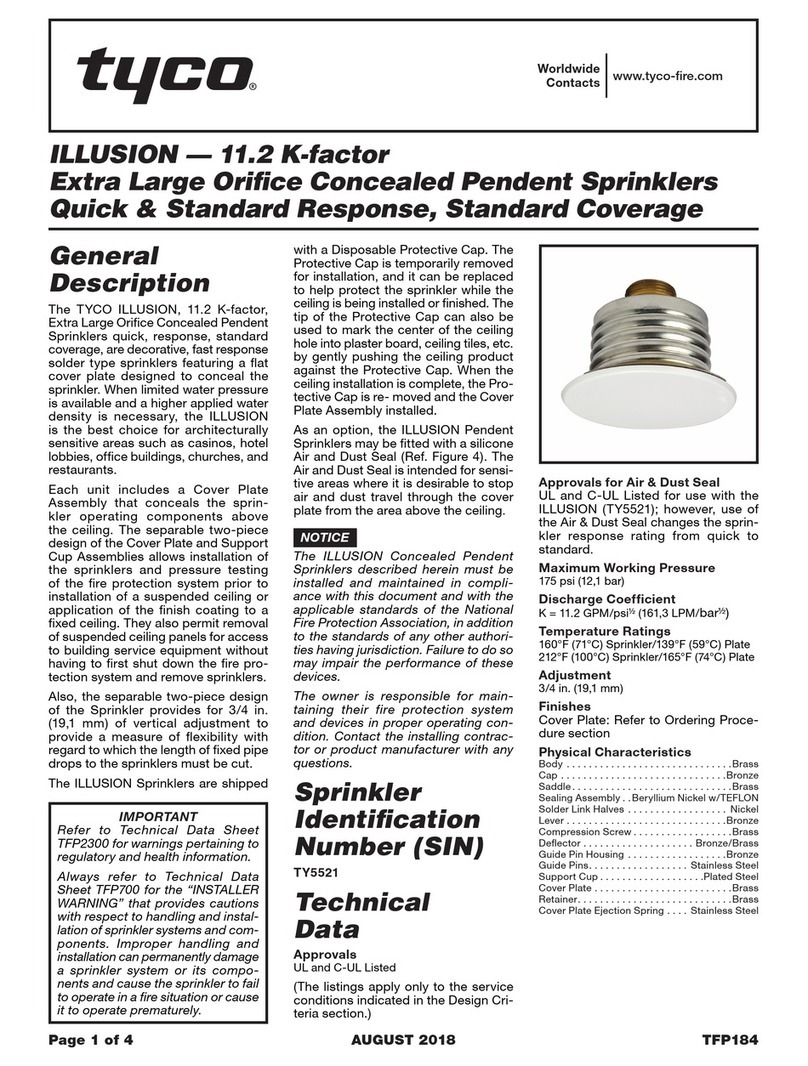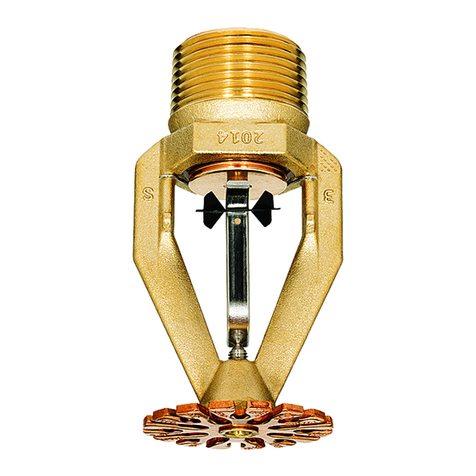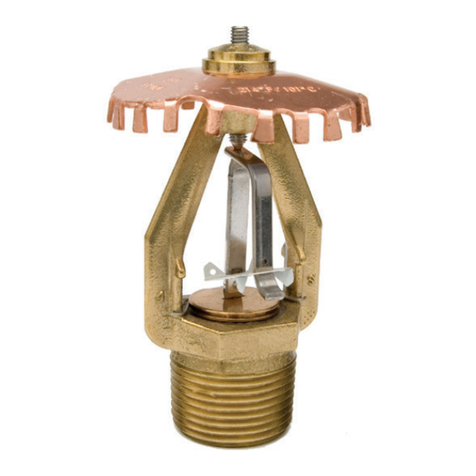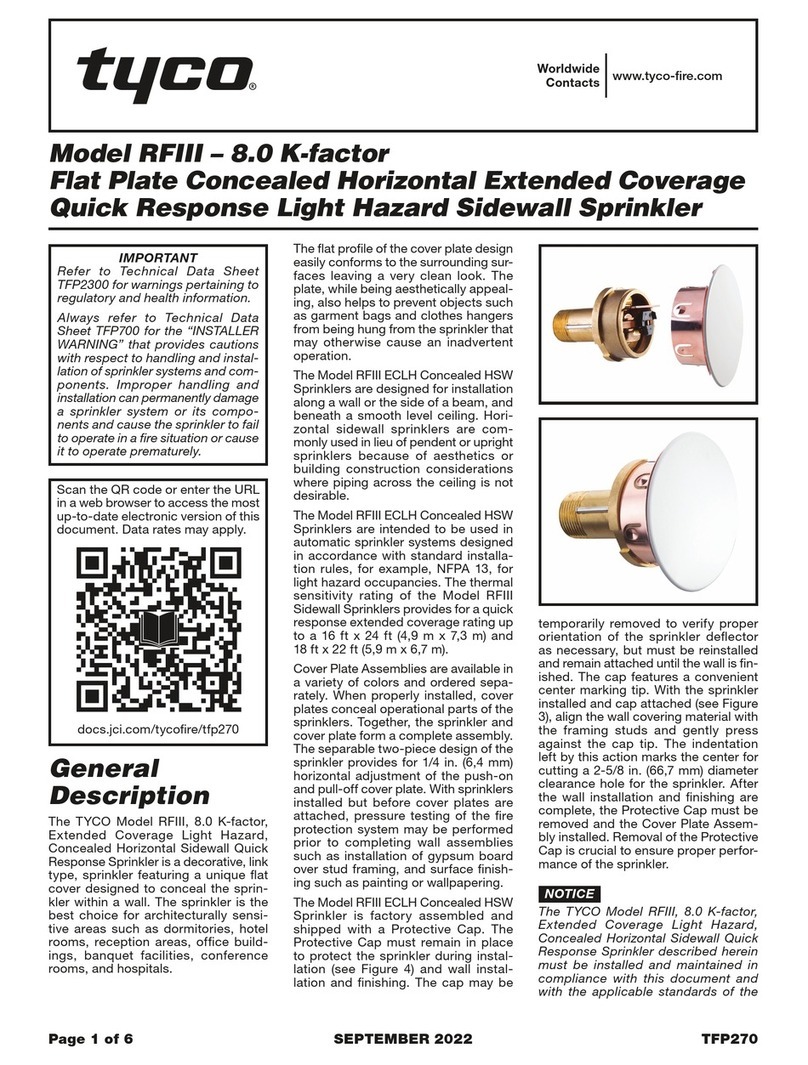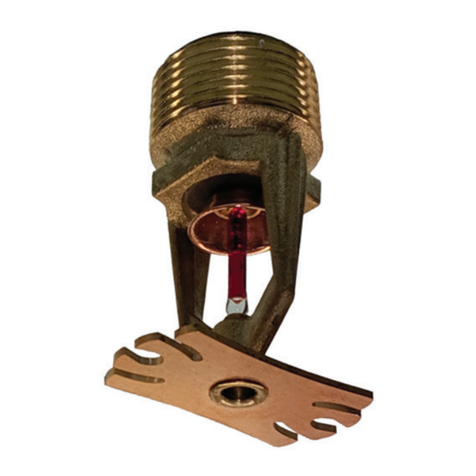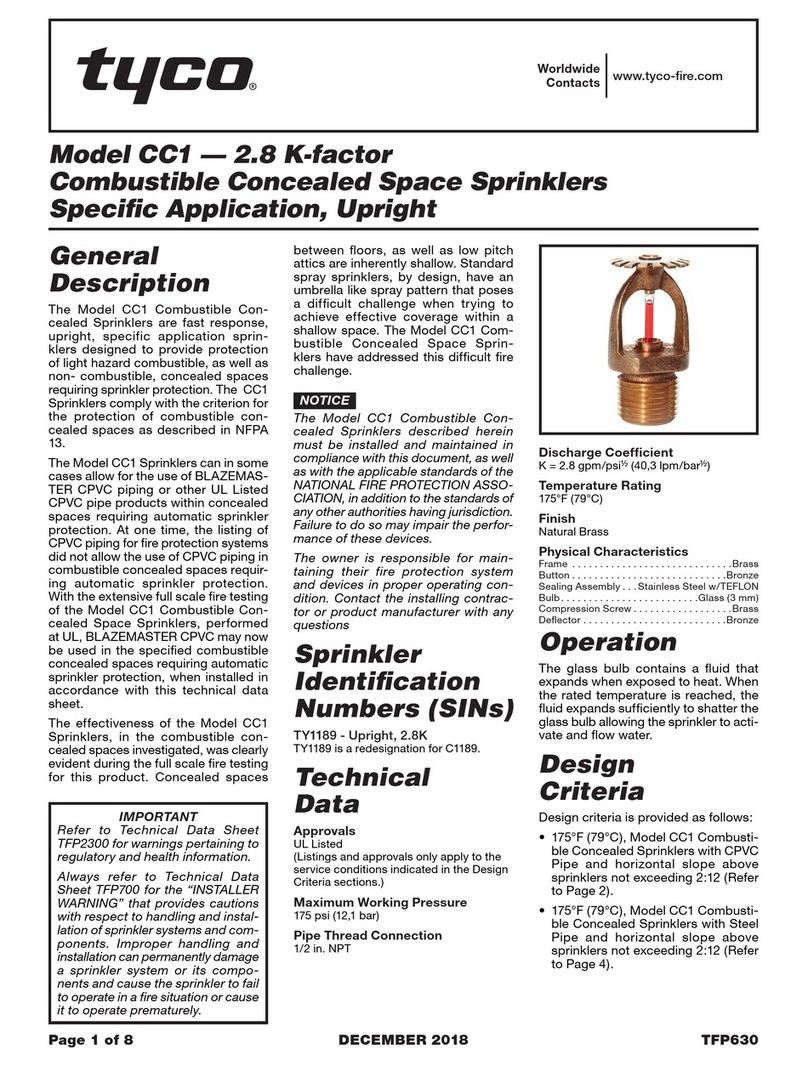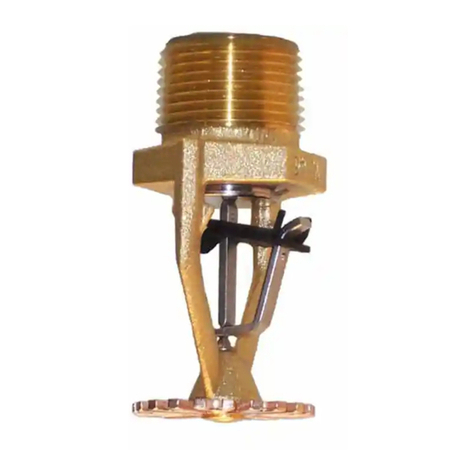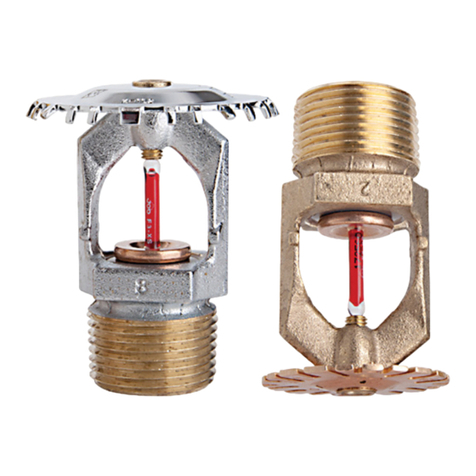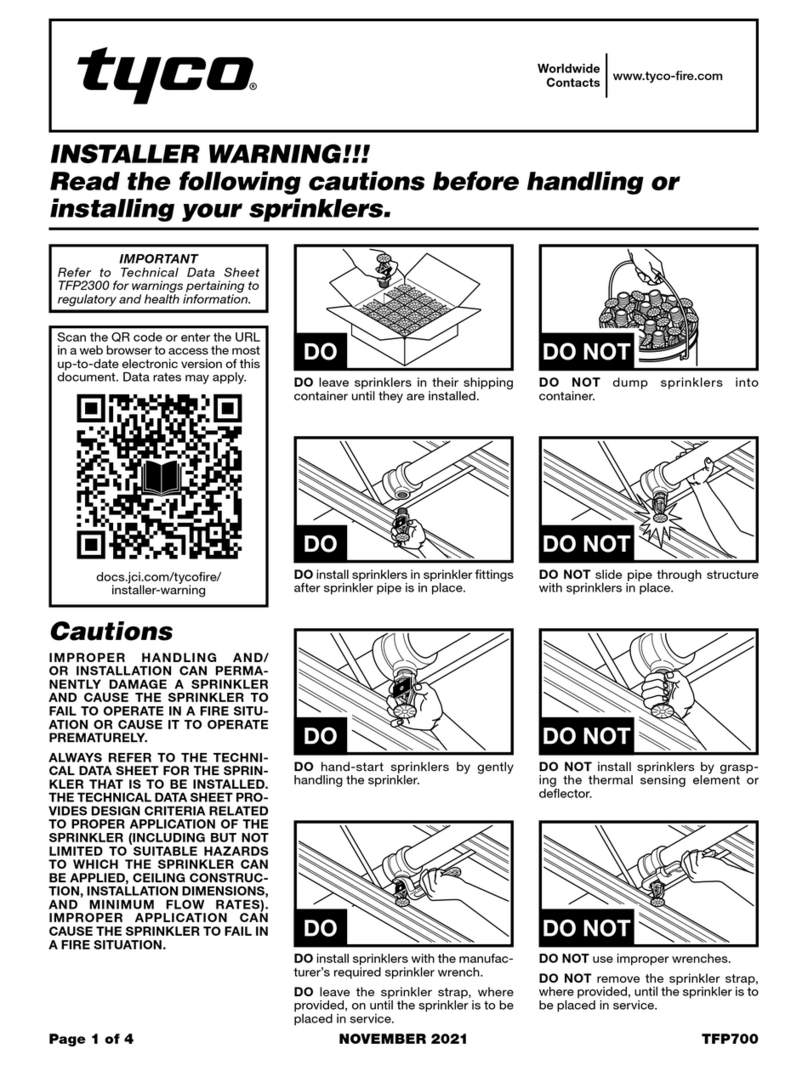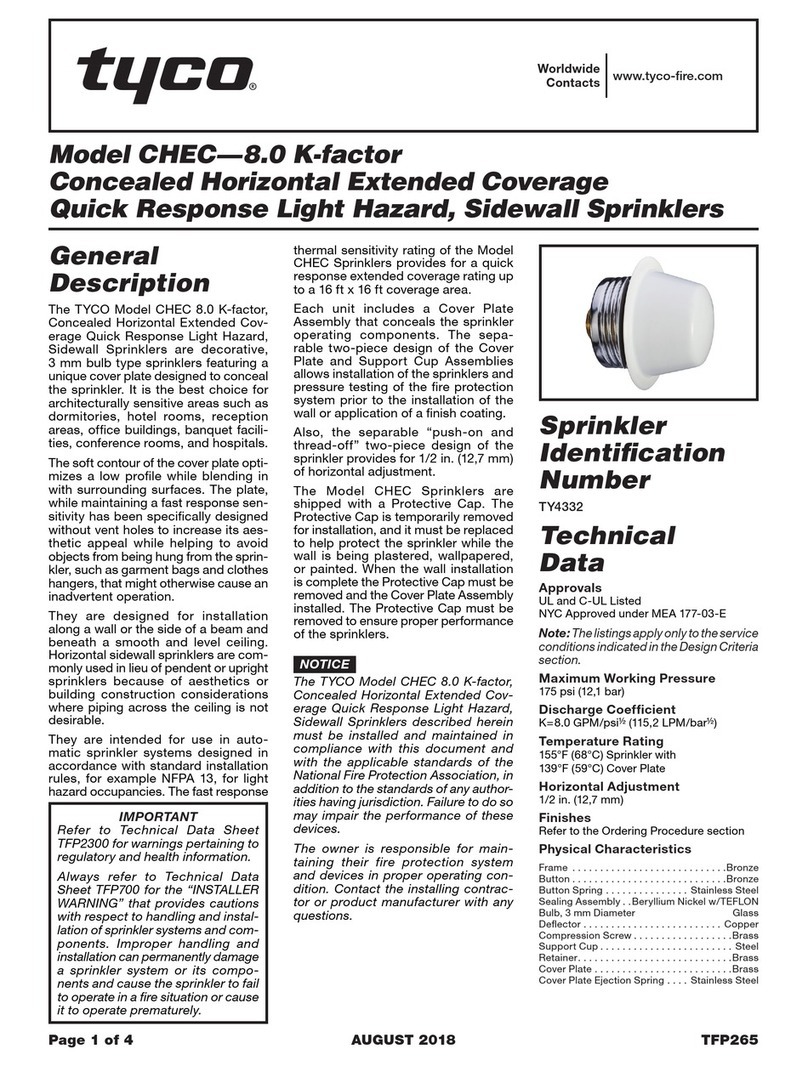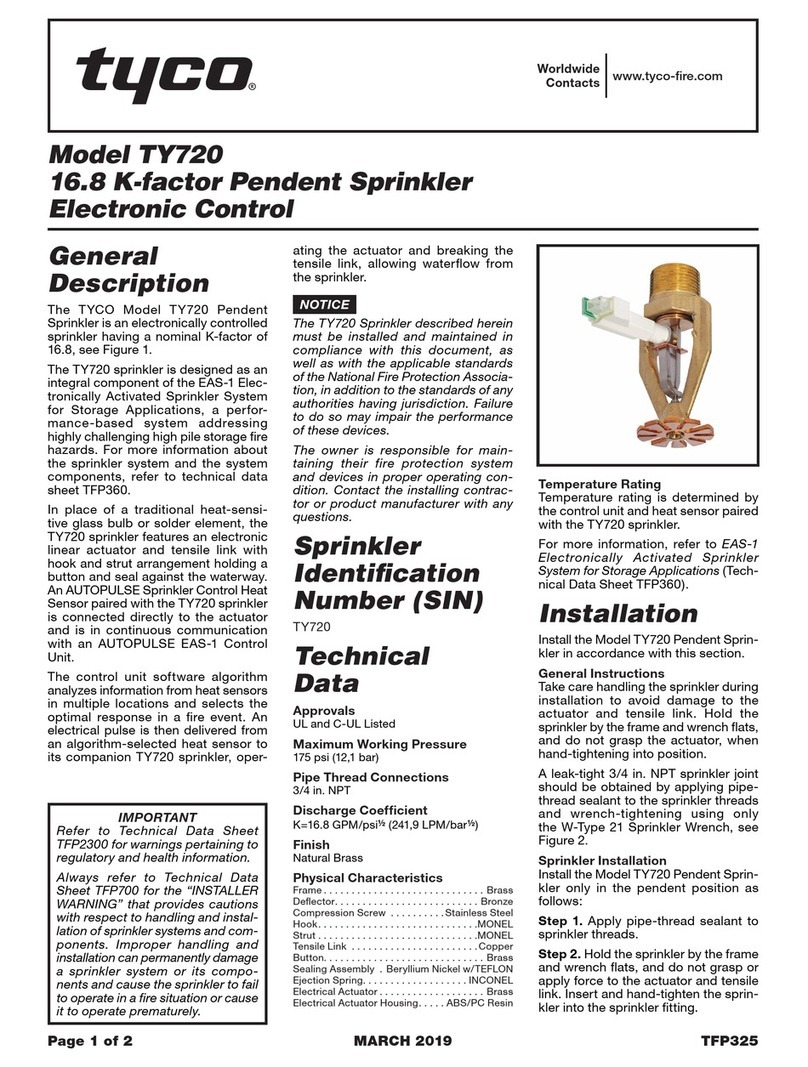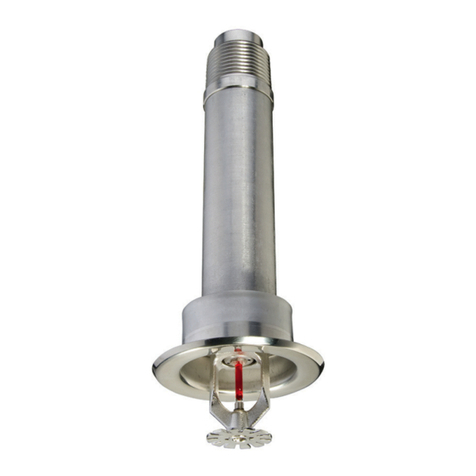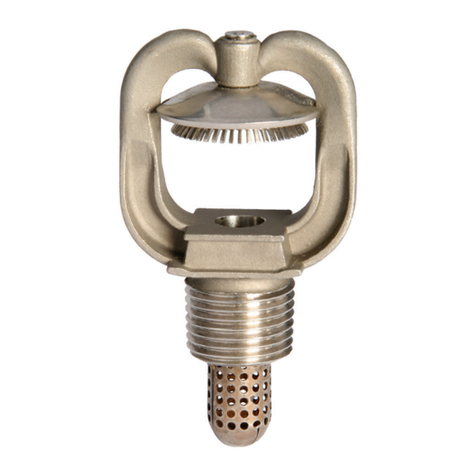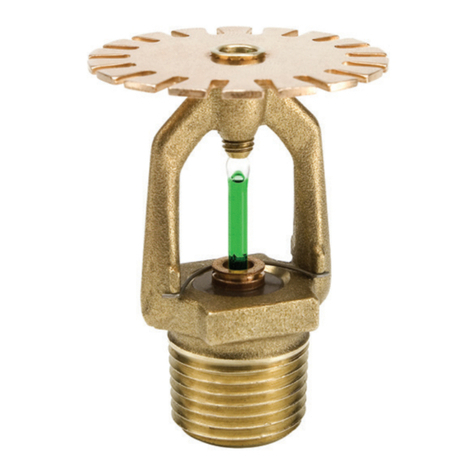
TFP460
Page 4 of 6
Dry Pipe System Water Delivery
When using the Series LFII Residential
Sprinklers (TY2235) in dry pipe sprin-
kler systems, the time for water deliv-
ery must not exceed 15 seconds for the
most remote operating sprinkler.
Obstruction to Water Distribution
Sprinklers are to be located in accor-
dance with the obstruction rules of
NFPA 13D, 13R, and 13 as applica-
ble for residential sprinklers as well as
with the obstruction criteria described
within the TYCO Technical Data Sheet
TFP490.
Operational Sensitivity
The sprinkler must be located relative
to the mounting surface as shown in
Figure 2.
Sprinkler Spacing
The minimum spacing between sprin-
klers is 8 ft (2,4 m). The maximum
spacing between sprinklers cannot
exceed the length of the coverage area
(Table A) being hydraulically calculated
(for example, a maximum of 12 ft for a
12 ft x 12 ft coverage area or 20 ft for a
20 ft x 20 ft coverage area.)
Sprinkler Fittings
The following fittings may be used:
•
The 1 in. NPT outlet or run of a
malleable or ductile iron threaded
tee ttings that meet the dimen-
sional requirements of ANSI B16.3
(Class 150)
•
The 1 in. NPT outlet or run of a cast
iron threaded tee ttings that meet
the dimensional requirements of
ANSI B16.4 (Class 125).
For dry pipe systems, only use the
side outlet of maximum 2-1/2 in.
size reducing tees when locating
the Series LFII Dry Type Residen-
tial Recessed Pendent Sprinklers
directly below the branch line. Oth-
erwise, use the configuration shown
in Figure 5 to assure complete
drainage from above the Series
LFII Sprinklers and the branch line.
Do not install the Series LFII
Dry Type Residential Recessed
Pendent Sprinklers into elbow fit-
tings. The Inlet of the sprinkler can
contact the interior of the elbow,
potentially damaging the Inlet seal.
Only use the configuration in Figure
4 where the sprinkler fitting and
water-filled pipe above the sprinkler
fitting are not subject to freezing and
where the length of the Series LFII
Sprinkler has the minimum exposure
length per Figure 6. See the Expo-
sure Length section and Table C.
•
The 1 in. NPT outlet of a GRINNELL
Figure 730 Mechanical Tee in wet
pipe systems only
•
The 1 in. NPT CPVC outlet of a
1 in. x 1 in. x 1in. NPT Sprinkler
Head Adapter Tee (P/N 80249) in
wet pipe systems only
•
The 1 in. NPT CPVC outlet of a
1 in. x 1 in. NPT Female Adapter
(P/N 80145) in wet pipe systems
only
•
The 1 in. NPT outlet of a 1 in. x 1 in.
x 1 in. NPT CPVC Sprinkler Head
Adapter Tee (P/N 80259) in either
wet or dry pipe systems
NOTICE
Do not install the Series LFII Dry Type
Residential Recessed Pendent Sprin-
klers into any other type fitting without
first consulting the Technical Services
Department. Failure to use the appro-
priate fitting may result in the following:
• failure of the sprinkler to operate
properly due to formation of ice over
the Inlet Plug or binding of the Inlet
Plug.
• insufficient engagement of the
inlet pipe threads with consequent
leakage.
Drainage
Branch, cross, and feed-main piping
connected to Series LFII Dry Type Res-
idential Recessed Pendent Sprinklers
and subject to freezing temperatures
must be pitched to allow proper drain-
age, in accordance with the minimum
requirements of the NATIONAL FIRE
PROTECTION ASSOCIATION for dry
pipe sprinkler systems.
Exposure Length
When using Series LFII Dry Type Resi-
dential Recessed Pendent Sprinklers in
wet pipe sprinkler systems to protect
areas subject to freezing temperatures,
use Table C to determine a sprinkler’s
appropriate exposed barrel length to
prevent water from freezing in the con-
necting pipes due to conduction. The
exposed barrel length measurement
must be taken from the face of the
sprinkler fitting to the surface of the
structure or insulation that is exposed
to the heated area. See Figure 6 for an
example.
Clearance Space
When connecting an area subject
to freezing and an area containing a
wet pipe sprinkler system, the clear-
ance space around the sprinkler barrel
of Dry Type Residential Recessed
Pendent Sprinklers must be sealed, in
accordance with the NATIONAL FIRE
PROTECTION ASSOCIATION. Due to
temperature differences between two
areas, the potential for the formation of
condensation in the sprinkler and sub-
sequent ice build-up is increased. If
this condensation is not controlled, ice
build-up can occur that might damage
the dry type sprinkler and/or prevent
proper operation in a re situation.
Ambient Temperature
Exposed to Discharge
End of Sprinkler
Temperatures for Heated Area(a)
40°F (4°C) 50°F (10°C) 60°F (16°C)
Minimum Exposed Barrel Length, Inches (mm)(b)
40°F (4°C) 0 0 0
30°F (-1°C) 0 0 0
20°F (-7°C) 4 (100) 0 0
10°F (-12°C) 8 (200) 1 (25) 0
0°F (-18°C) 12 (305) 3 (75) 0
-10°F (-23°C) 14 (355) 4 (100) 1 (25)
-20°F (-29°C) 14 (355) 6 (150) 3 (75)
-30°F (-34°C) 16 (405) 8 (200) 4 (100)
-40°F (-40°C) 18 (455) 8 (200) 4 (100)
-50°F (-46°C) 20 (510) 10 (255) 6 (150)
-60°F (-51°C) 20 (510) 10 (255) 6 (150)
Notes:
a. For protected area temperatures that occur between values listed above, use the next cooler temperature
b. These lengths are inclusive of wind velocities up to 30 mph (18,6 kph)
TABLE C
MINIMUM RECOMMENDED LENGTHS OF EXPOSED
SPRINKLER BARRELS IN WET PIPE SYSTEMS
